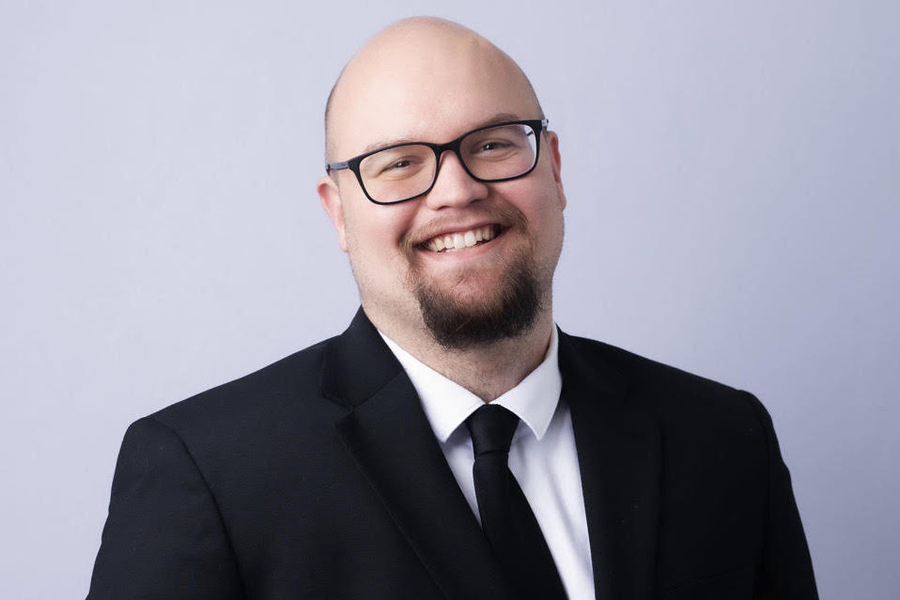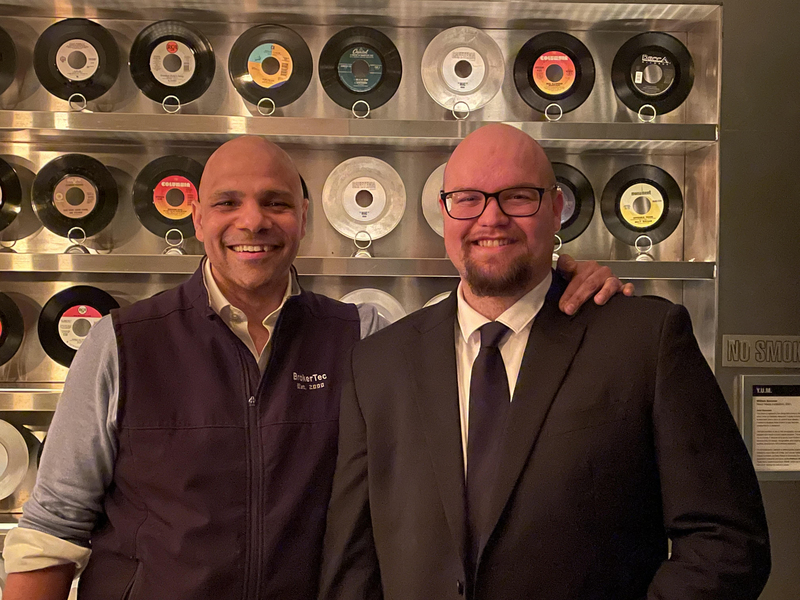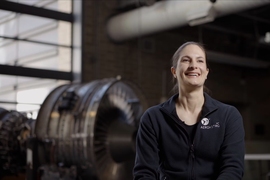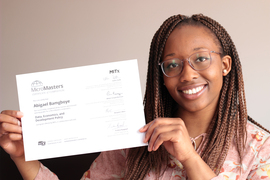Even before joining a financial technology startup, Michael Pilgreen believed in taking risks and investing long-term — especially when it came to his education and career.
For six years, Pilgreen worked in creative production management, specializing in painting, metalworking, and installations. He’d established himself in the art world with large collaborative projects like a mosaic made entirely of sequins for the Chili’s Care Center at St. Jude Children’s Research Hospital in his hometown of Memphis, Tennessee, and never imagined himself working in a STEM field. But in 2020, when the Covid-19 pandemic brought his creative projects to a halt, Pilgreen found himself “unemployed, distraught, and confused, searching for a sense of purpose and direction.”
That search led Pilgreen, a self-described “math nerd,” to financial technology — and to MIT OpenCourseWare (OCW).
“I knew a lot of top universities in the world had started posting their courses and materials online to encourage global collaboration and learning,” Pilgreen recalls. “So, once I knew I wanted to learn finance and computers, I focused on the birthplace of financial engineering — MIT — and tried every way possible to consume information from MIT.”
After watching Professor Andrew Lo’s introduction to finance lecture, Pilgreen was hooked. He completed Lo’s finance theory classes and dived into Professor Gary Gensler’s courses, including “Fintech: Shaping the Financial World” and “Blockchain and Money.” The more time he invested in familiarizing himself with the field, the more certain he felt of his decision — and his ability — to break into the financial technology industry.
Pilgreen jokes that the career switch would’ve required him to use a side of his brain he hadn’t tapped into since high school. But as he absorbed Gensler’s lectures and course materials, the graduate of Rhodes College realized that his liberal arts background could be an asset. “I knew I had the ability to grapple with big ideas and concepts, and saw the opportunity for innovation in the international capital markets,” he says, crediting the OCW courses with teaching him the “language and rhythm of the financial world.”
The next step was to build his technical skills. Again, Pilgreen turned to OCW, this time exploring its catalog of computer science courses, including “Introduction to Computer Science and Programming,” “Mathematics for Computer Science,” and “Introduction to Algorithms.”
“All these courses laid the foundation for my technical knowledge and ability to understand complex engineering problems very quickly,” Pilgreen says. “I felt like I knew enough to be dangerous — and started applying to various local wealth management firms.”
While cold-calling prospective employers might seem risky to some, for Pilgreen, it was another form of investing in himself and his future. He would call up three to five firms a day to ask about their use of technology and to get a sense of how he could apply his evolving knowledge and skills. “The more I learned, the more time I invested, and the more conversations I participated in — the more I felt like what I was doing was purposeful,” he says.
With the finance and computer science courses on OCW giving him a solid foundation, Pilgreen continued investing in his learning by enrolling in the MITx MicroMasters program in finance. He also began studying for several financial certification exams, including the CFA, SIE, Series 7, and Series 66. Through MIT, Pilgreen learned of DataCamp, a platform offering courses in data science and machine learning. He signed up for that, too, and became so absorbed in developing his data skills that for several weeks, he was one of DataCamp’s top learners. “It was really as if I was in school full-time with all my studying but without the debt,” Pilgreen says, explaining that he was dollar-cost averaging, or regularly investing a fixed amount in Bitcoin, at the time to fund his enrollment in MicroMasters and the supplemental data science courses.
For Pilgreen, the biggest risks result in the biggest rewards. While completing the finance MicroMasters program, he received two job offers — one from an established wealth management firm and another from BondCliQ, a financial technology startup that was just getting off the ground. Pilgreen went with the riskier option, seeing it as an opportunity for more hands-on learning, another kind of investment in himself. He started at the company in March 2021 after completing a two-month training program, learning the ropes of institutional trading in a sales role before moving into an engineering position to lead the startup’s architecture migration effort.
Now a senior engineer at BondCliQ, Pilgreen reflects on the journey that began nearly two years ago with OCW. He says, “I feel nothing but gratitude for my instructors, the organizers, and the facilitators of both OCW and the MicroMasters. I am on the cusp of greatness and it was derived from learning.”












